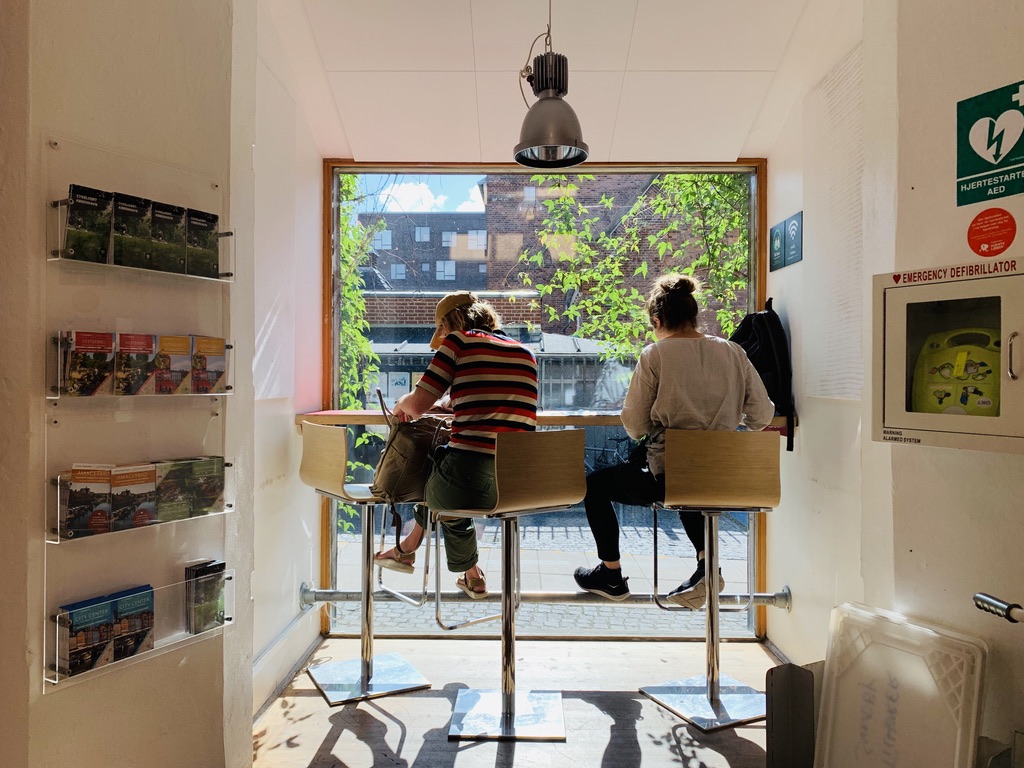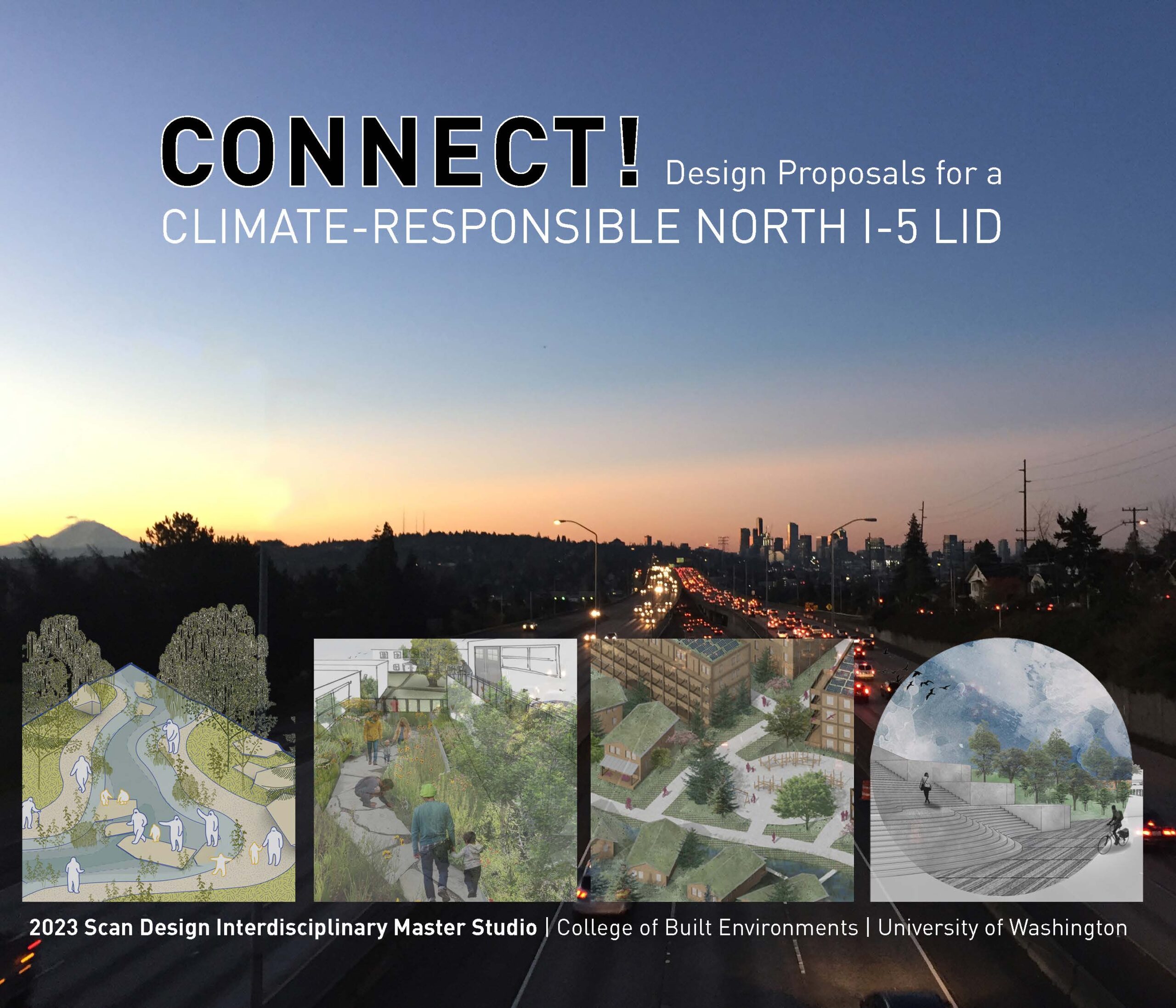The 2023 Scan Design Interdisciplinary Master Studio envisioned how a “lid” over I-5 between the UDistrict and Wallingford neighborhoods in Seattle might serve to:
• CONNECT and strengthen the neighborhoods
• CONNECT via safe, low-carbon active transportation systems
• CONNECT and create new equitable housing, green and public spaces that cultivate a caring urban culture
• CONNECT places where people live to where they work, play, shop, create, and find services
• CONNECT human health with health of other species, supporting biodiversity
• CONNECT people in the city to Seattle’s natural context
• CONNECT present needs with those of the future, for both local and global intergenerational equity.
Prior to the quarter, studio participants traveled to Denmark and Sweden for a 2+ week study tour exploring active mobility solutions, urban ecological design, green stormwater management, and people-centered public spaces while visiting projects and firms in Copenhagen and Malmö. Upon returning to Seattle, students built on understandings gained from the study tour, employing circular city planning approaches, public space principles, pedestrian and bicycle connectivity, urban biodiversity, and climate mitigation and adaptation projects to the challenge of a North Seattle Lid.
Students explored informative and inspiring precedents of highway caps and land bridges that contribute to urban life; identified guiding frameworks for achieving combined environmental, economic and social goals; investigated and analyzed the large site and its nested contexts of related systems; and developed concepts for a future connective surface across the chasm of I-5.
This research created the foundation for the development of group site proposals. Throughout the quarter, students received invaluable insight from master teacher Louise Grassov, and in November, students collaborated in a charrette with the UDistrict Partnership, Wallingford and UDistrict residents, City of Seattle staff, local professionals and Lid I-5 proponents.

